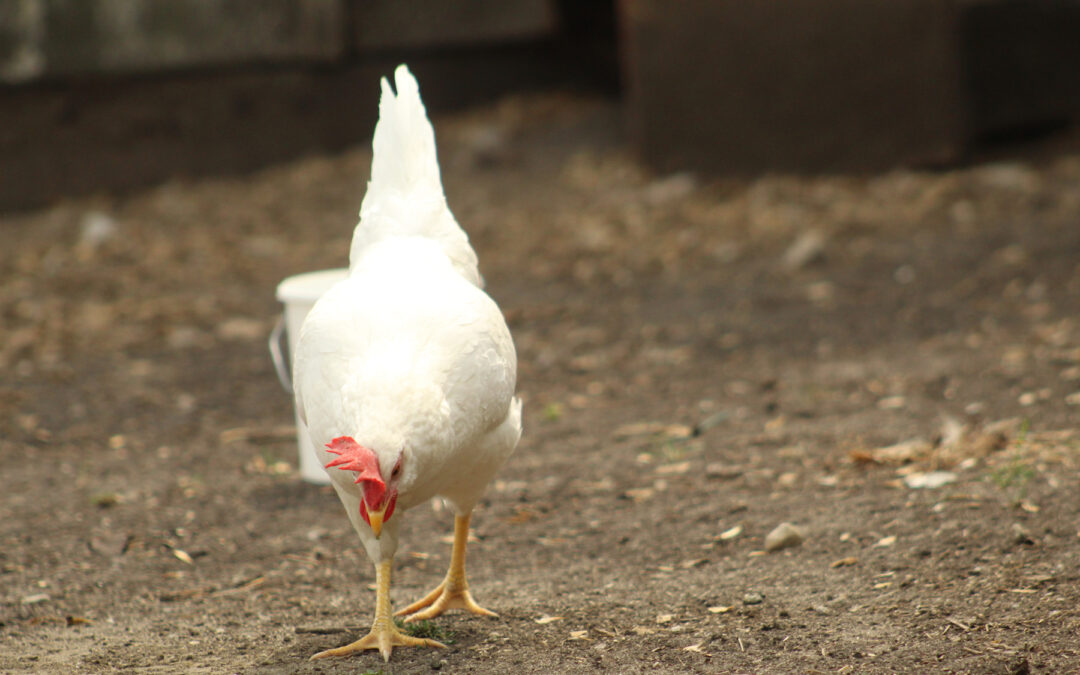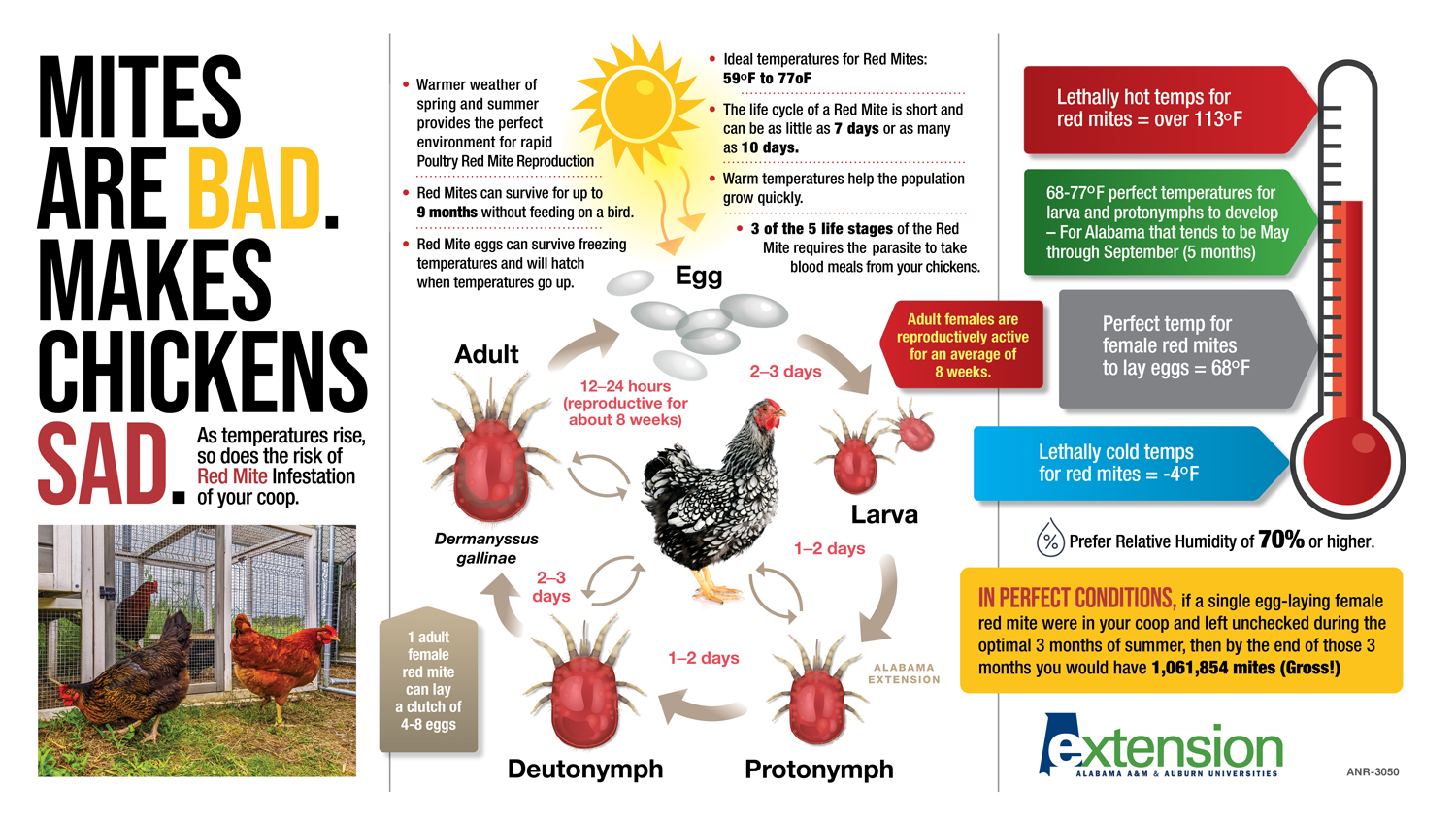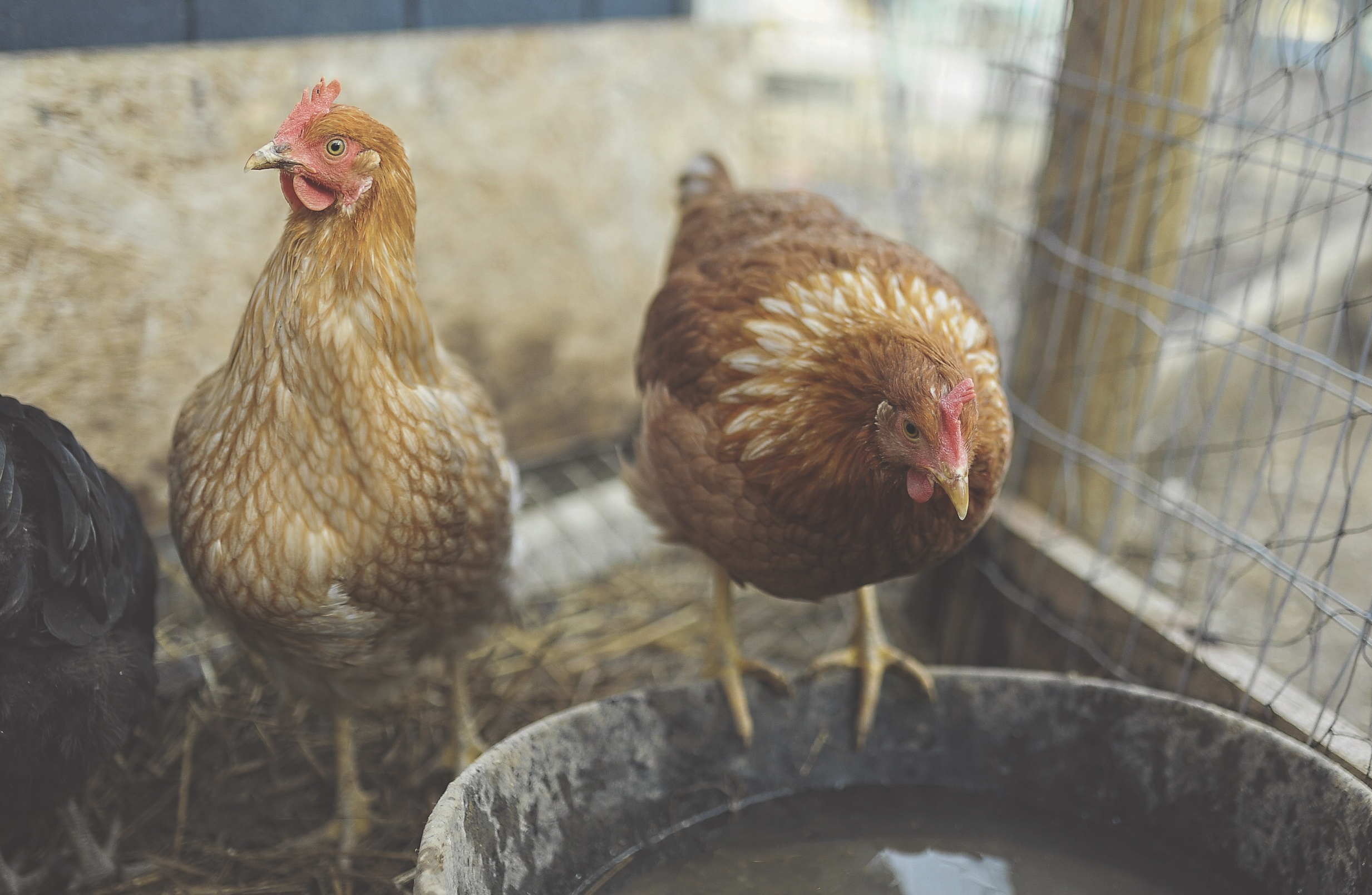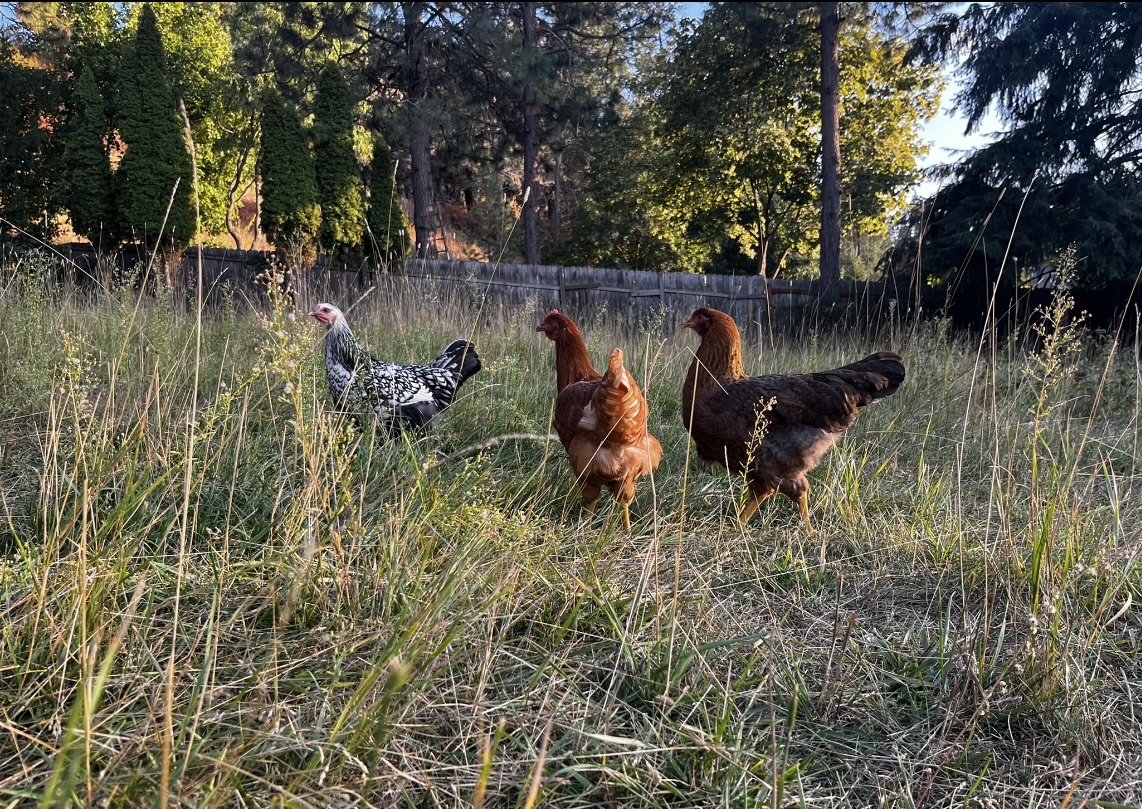Poultry red mites are a type of external parasite that infests chickens. They conceal themselves within the chicken coop surroundings and reproduce quickly. These mites survive by feeding on the blood of chickens and can even cause their death. Learn how to prevent and treat poultry red mite infestations.
Multiple species of mites exist globally, but only a limited number of them are relevant to poultry as external parasites. Specifically, this document addresses the poultry red mite, scientifically known as Dermanyssus gallinae, and also referred to as chicken mite or roost mite. This particular mite is an ectoparasite that feeds on the blood of chickens and various other avian species.
Poultry red mites are not always bright red; rather, they are red after a blood meal. They also look similar to northern fowl mites. The main difference between these two mites is that you will not find red mites on chickens during the day, whereas the northern fowl mite spends its entire life cycle— day and night—on the chicken.
Poultry Mites | Red Mite Identification
The poultry red mite is a hematophagous, or blood- sucking, ectoparasite. This particular mite stays on the chickens only at night and then hides in the coop environment during the day. To see if your flock is being affected by this particular external parasite, examine your flock at night with a flashlight. These parasites are most active 5 to 11 hours after darkness.
When your chickens go to roost at night, poultry red mites crawl along the roost to find the host. They crawl along the chicken’s leg to where the scales on the legs end and the feathers begin. This is right above the hock joint. Skin not protected by scales is subject to being bitten by the poultry red mites. You may just see redness from bite marks, or you may see the mites themselves, just above the hock. This does not mean that they will not travel up to the breast or thigh areas and bite the skin there. Sometimes you will see bite marks or lesions on other areas of the body when you lift the feathers to see the skin.
Poultry red mites are tiny, so you must look closely at what looks like dirt on the birds. Since chickens engage in dust bathing, observing their skin at night may require patience as you wait to see any potential movement. You may be able to disturb what looks like a mite by using a tiny paintbrush, such as ones used in watercolor paints, and see if it responds by moving. Be aware that they move slowly.
When you are moving equipment around or cleaning in the chicken coop, you may see small groups of poultry red mites. They congregate in cracks and crevices. Taking apart a wooden coop for spring cleaning, or perhaps during regular monthly cleaning, will likely reveal mites as they slowly run for cover once a hiding spot has been exposed. They will even inhabit spaces around nest boxes or in the litter. You must carefully check broody hens for signs of infestation from sitting in a nest box with red mites.
Poultry Red Mites | The Life Cycle
The life cycle of the poultry red mite starts as an egg that hatches in 2 to 3 days. At this stage, it is called a larva, and it is in its smallest size. In 1 to 2 days, the larva molts and is called a protonymph. In another 1 to 2 days, the protonymph molts and is called a deutonymph. After 2 to 3 days, the deutonymph molts one last time and is then an adult poultry red mite. The protonymph, deutonymph, and adult take blood meals on the host chicken. Within 12 to 24 hours after becoming an adult, a female poultry red mite can produce eggs that are laid in clutches of 4 to 8. Generally speaking, a female red mite will lay around 30 eggs in her lifetime, and she is capable of being reproductively active for about 8 weeks. In optimal conditions, the time between an egg being laid, molting several times, and becoming an egg-producing adult can be as short as a week. Poultry red mites are good survivors and can live in the environment for up to 9 months without feeding.
Poultry Red Mites | Symptoms of Infestation
Chickens that are enduring an infestation of poultry red mites will be affected in two ways. First, birds will express stress-related behaviors. These behaviors will include increased levels of preening, head scratching, and some gentle feather pecking due to skin irritation from bites. Plumage damage can be seen as the feather quality of chickens will be reduced due to self-grooming. Increased self-grooming is a characteristic symptom of anxiety. This can be identified by feathers losing their shine or iridescent sheen. Feathers will begin to look tattered at the ends from frequent preening by the beak. A small portion of the feather may be missing from the rachis out to the end of the barb.
Stressed hens may begin to act aggressively toward one another. The aggression can begin with feather pecking and progress to cannibalism. There may be increased levels of light feather-pecking at night due to the irritation from the mites. In severe infestations, chickens may spend more than half of the night in feather-pecking behavior, which disrupts their sleep patterns. Hens may no longer sleep on perches where they have been repeatedly bitten.
Red mites may also be seen crawling on eggs if they inhabit crevices in the next box. This infestation can be especially problematic for hens that choose to sleep in the nest box or have begun to brood eggs in the nest box. Severe infestations of red mites can result in blood spots appearing on eggs. These red spots occur when eggs roll around in the nest and crush the red mites, marking the eggs with their color. When nest boxes are infested, hens may choose to avoid using the nest boxes when laying eggs. Instead, hens may begin to lay eggs on the coop floor or find an alternative location for egg laying. This can lead to dirtier eggs from the floor and hidden nests that are not discovered for longer periods.
Another symptom of a red mite infestation is in the chicken’s body weight. Chickens will begin to weigh less. This is possibly due to the disturbance of normal behavior during both the day and night. Although not complete, information on the effects of the mite on chicken behavior as noted by industry personnel and researchers, indicates that water intake will increase, egg production will decrease, and feed intake will increase. The increased feed intake and lowered egg production and body weight lead to a lower feed conversion ratio.
Birds will experience anemia that can range from mild to severe, even leading to death. Anemia is when the body does not have enough healthy red blood cells, which leads to reduced oxygen flow to the body’s organs. This can result in fatigue, changes in skin color, or a fast heartbeat. With this condition, your hens will have pale combs and faces. In a particularly bad infestation of poultry red mites, hens may lose more than 3 percent of their blood by volume every night. They may also isolate themselves and appear huddled or sleepy.
Poultry Red Mites | Prevention
Regular cleaning disturbs the cracks and crevices where red mites hide. Painting the inside of the coop is another way to cover up many of the cracks and crevices where mites like to hide during the day. If you choose a light paint color, mites are also easier to see. Having a painted coop interior will result in an interior that is much easier to clean and disinfect. An alternative to painting the interior is to use a silicone gel to seal larger cracks and crevices. Exclude wild birds and rodents from your flock, as they can be a source of red mites.
Poultry Red Mites | Learn More
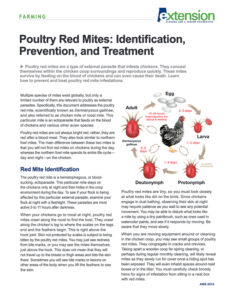 There is more to learn about the Poultry Red Mite. Please take a moment to learn more about how to monitor your flock for this external parasite and also how to treat your coop and birds if they are present.
There is more to learn about the Poultry Red Mite. Please take a moment to learn more about how to monitor your flock for this external parasite and also how to treat your coop and birds if they are present.
DOWNLOAD PDF:
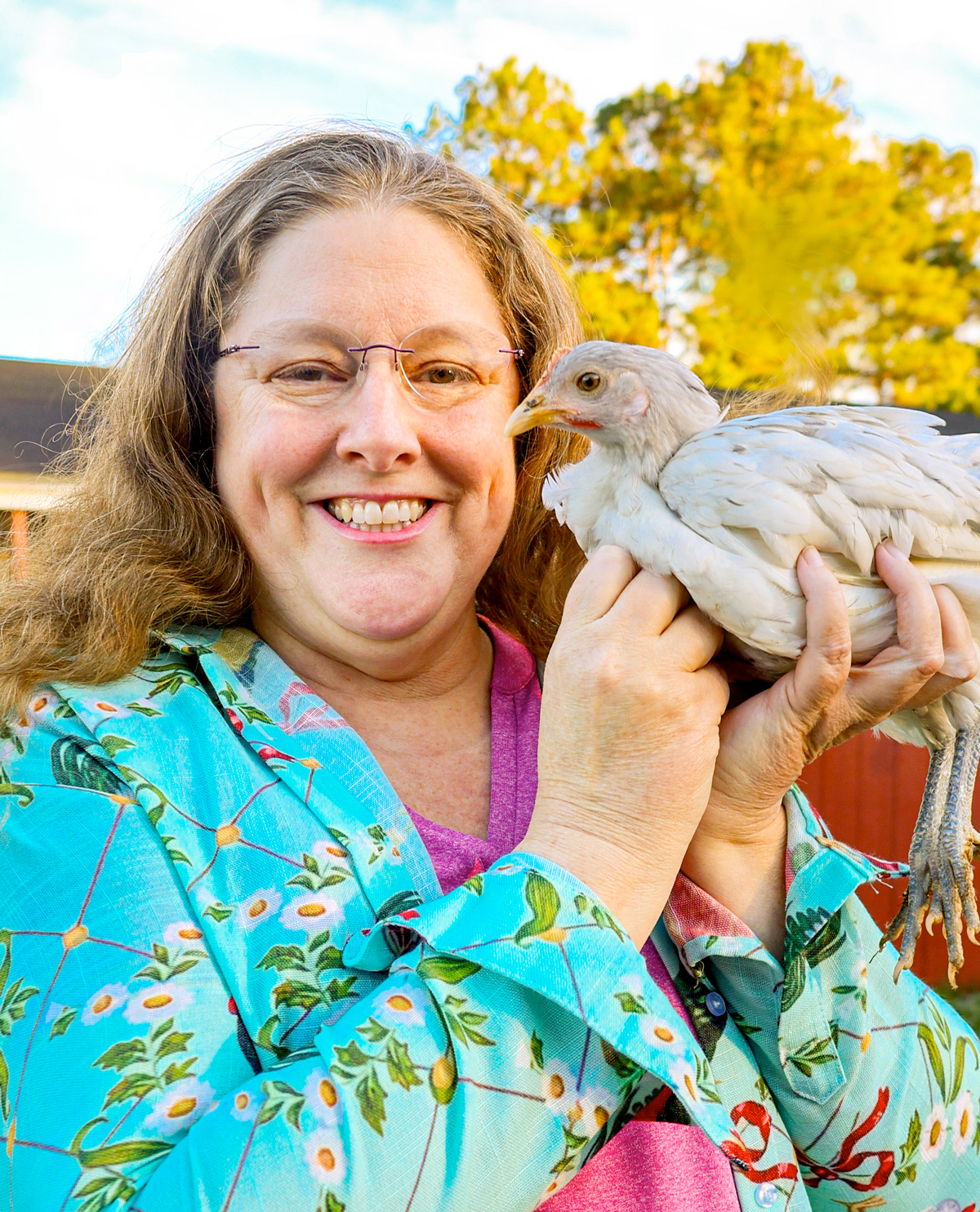
Dr. Brigid McCrea, PhD, Extension Specialist, Poultry, Auburn University — Dr. McCrea is a poultry scientist who has worked with small flock owners for up to two decades. Her expertise is being utilized at Auburn University as a small flock poultry extension specialist and small animal 4-H program lead. Learn more by visiting Aces.edu.
Featured photos by Cassandra Haring and Cassidy Cornell.

